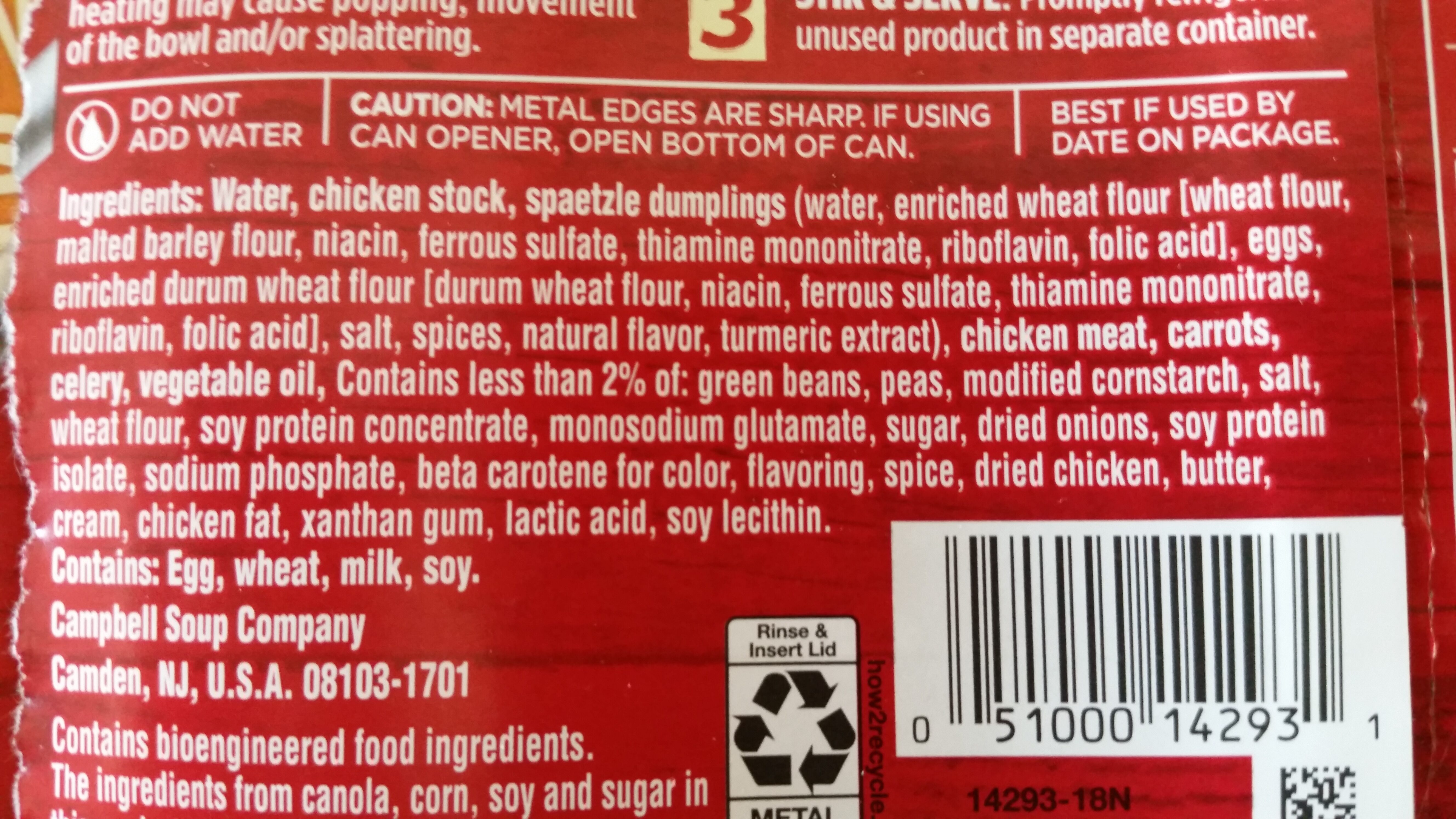Chunky Soup (Creamy Chicken & Dumplings) - Cambells - 18.8 oz (1 lb 2.8 oz) 533 g
この商品ページは完成していません。既存の写真からデータを編集または追加したり、 Android または iPhone/iPad のアプリを使用して写真を撮影して、手伝ってください。ありがとうございます!
×
バーコード: 0051000142931 (EAN / EAN-13) 051000142931 (UPC / UPC-A)
一般名: Chicken and Dumplings Soup
数量: 18.8 oz (1 lb 2.8 oz) 533 g
パッケージング: en:Can
ブランド: Cambells, Campbell's Chunky
カテゴリー: 缶詰, en:Meals, スープ, en:Canned meals, en:Canned soups
成分の起源: アメリカ合衆国
製造または加工の場所: USA
生産者の公式サイト上の製品ページへのリンク: http://www.campbells.com/chunky/
好みに合わせて
環境
パッケージング
輸送
Report a problem
情報元
製品に追加 によって waistline-app
最後に編集した製品ページ によって zy7tcb1zqpq.
製品ページの共同編集者 aleene, houstonfoodbank, inf, kiliweb, openfoodfacts-contributors, packbot, prepperapp, waistline.fd3ba39f-3173-4164-8190-93849f1e7bed, yuka.sY2b0xO6T85zoF3NwEKvlkAXAsTeri3tNiL4mESq6NveDKe0XONqx67TE6o, yuka.sY2b0xO6T85zoF3NwEKvlmhXboPv_hnpLBflpnyC4_2Jd7voP94u743EOKs, yuka.sY2b0xO6T85zoF3NwEKvln1ACMThpi7mGgbvnlWVl-yJPMyzPc50_ZWnEao.










